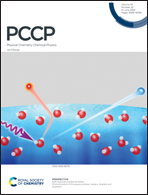A two-dimensional MXene/BN van der Waals heterostructure as an anode material for lithium-ion batteries†
Abstract
Titanium carbide (Ti3C2Tx) is highly regarded as a promising anode material for lithium-ion batteries but suffers from sluggish kinetics with low storage capacity. In this work, a BN/Ti3C2Tx heterostructure is effectively fabricated by high energy ball-milling, which plays a series of roles in enlarging the interlayer spacing, reducing the size of the nanosheets and maintaining the structural integrity. Benefiting from the synergistic effect between the BN and Ti3C2Tx monolayers, it delivers a high reversible capacity of 521.6 mA h g−1 at 0.1 A g−1, excellent rate capabilities (344.9 mA h g−1 at 1 A g−1 and 251.3 mA h g−1 at 2.5 A g−1) and a robust long-term cycling stability with 84.4% capacity retention after 1400 cycles. In particular, the theoretical calculations further confirm that the BN/Ti3C2Tx heterostructure manifests improved adsorption energies, an ultralow diffusion barrier and a high charge–discharge rate. These findings provide an important new strategy for further design and rational fabrication of MXenes for energy storage applications.



 Please wait while we load your content...
Please wait while we load your content...